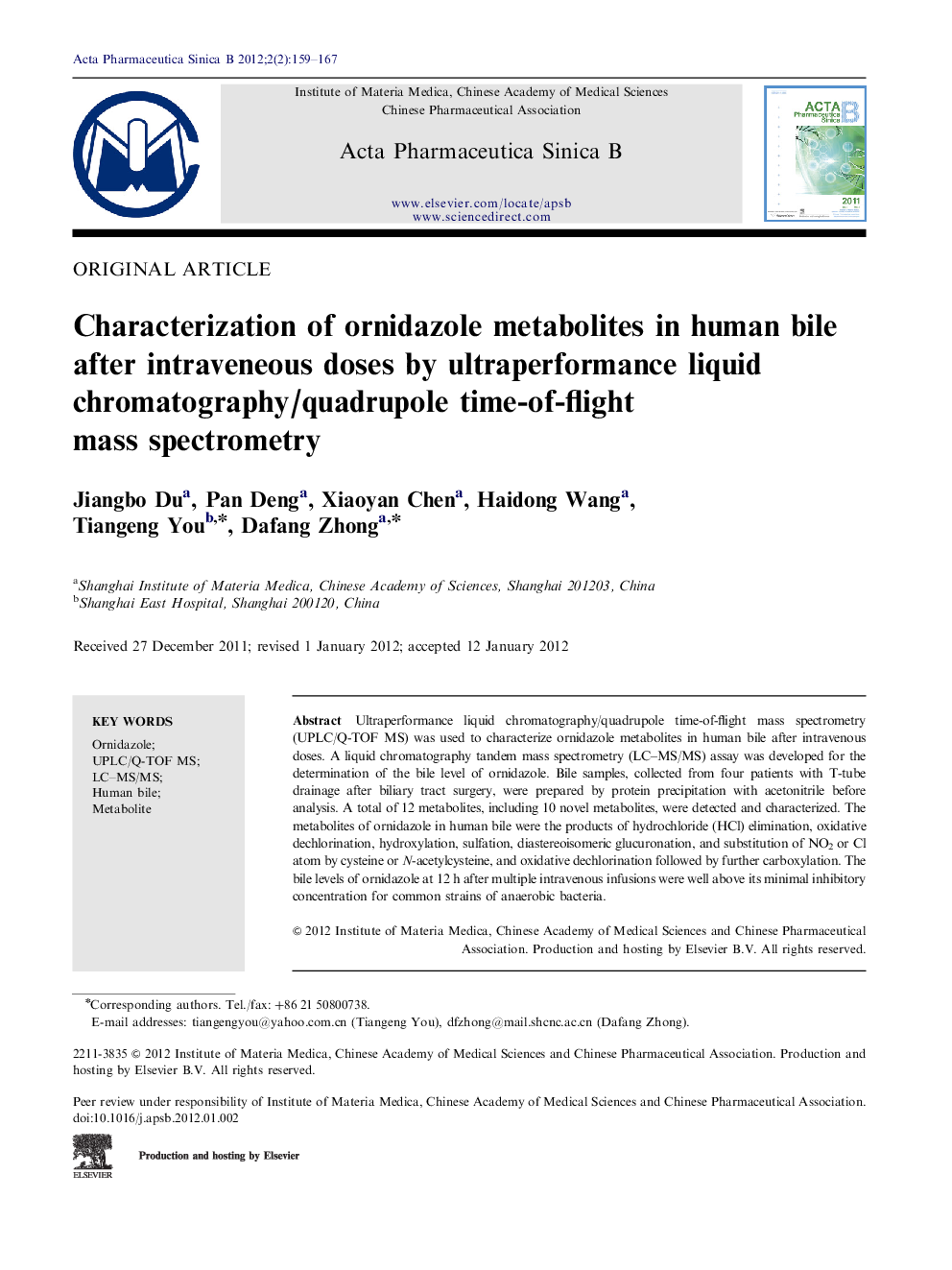| Article ID | Journal | Published Year | Pages | File Type |
|---|---|---|---|---|
| 2474719 | Acta Pharmaceutica Sinica B | 2012 | 9 Pages |
Ultraperformance liquid chromatography/quadrupole time-of-flight mass spectrometry (UPLC/Q-TOF MS) was used to characterize ornidazole metabolites in human bile after intravenous doses. A liquid chromatography tandem mass spectrometry (LC–MS/MS) assay was developed for the determination of the bile level of ornidazole. Bile samples, collected from four patients with T-tube drainage after biliary tract surgery, were prepared by protein precipitation with acetonitrile before analysis. A total of 12 metabolites, including 10 novel metabolites, were detected and characterized. The metabolites of ornidazole in human bile were the products of hydrochloride (HCl) elimination, oxidative dechlorination, hydroxylation, sulfation, diastereoisomeric glucuronation, and substitution of NO2 or Cl atom by cysteine or N-acetylcysteine, and oxidative dechlorination followed by further carboxylation. The bile levels of ornidazole at 12 h after multiple intravenous infusions were well above its minimal inhibitory concentration for common strains of anaerobic bacteria.
Graphical abstractThe study reports 12 metabolites of ornidazole in human bile, ten of which are novel. Several biotransformation pathways are proposed. The bile level of ornidazole was determined using a validated LC–MS/MS method, which proves its clinical effectiveness.Figure optionsDownload full-size imageDownload as PowerPoint slide
